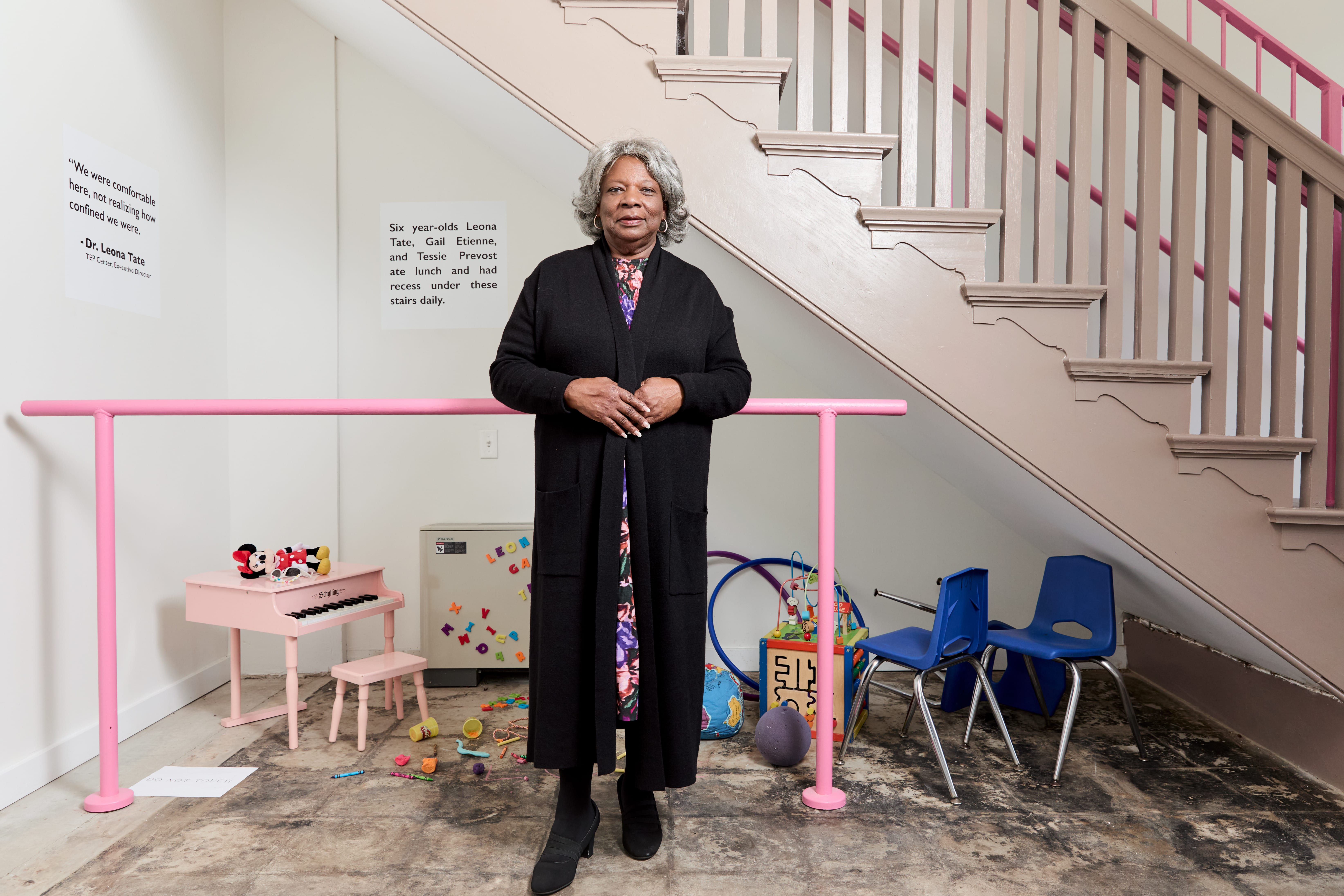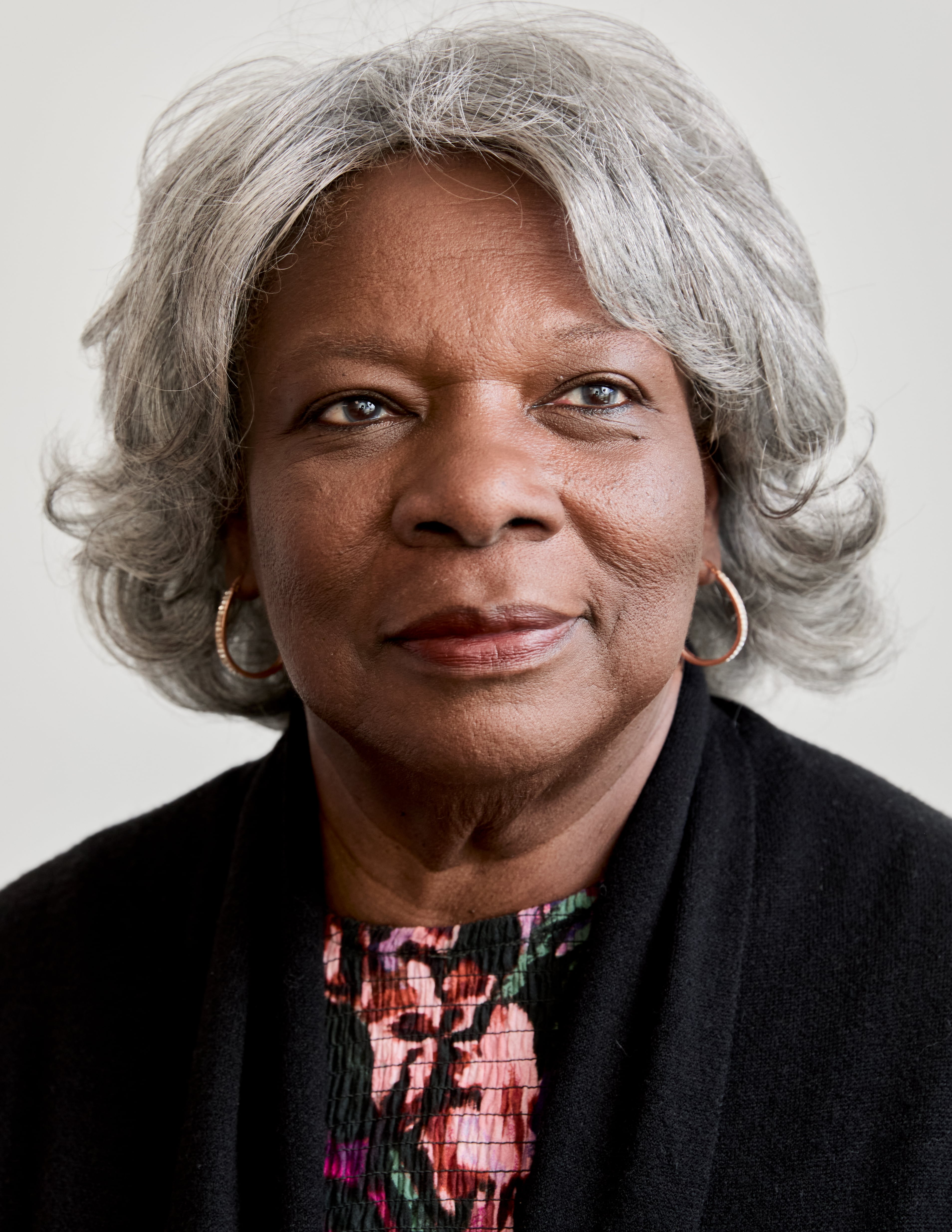Formerly segregated Louisiana school transformed into civil rights center
The U.S. Supreme Court’s landmark Brown v. Board of Education decision in 1954 may have paved the way for the desegregation of schools in the United States, but in the Jim Crow South it was no more than a gravel path at best.
It wasn’t until six years later, on Nov. 14, 1960, that three little girls dared to challenge the segregation of public schools in New Orleans. On that day, Leona Tate, Gail Etienne and Tessie Prevost presented themselves at McDonogh 19 Elementary School in the city’s 9th Ward after a federal judge ordered the nation’s first public school integration plan in Orleans Parish.
“I was excited because I was coming to a new school,” Tate said, recalling that day. “I was a little upset because just seeing that crowd out there, seeing the police on horseback holding the crowd back, I thought a Mardi Gras parade was coming. I knew a parade usually passed there and didn’t know why I had to go to school when everyone else was at the parade.”
That throng, though, did not have merriment on its collective mind. Although Tate said that she did not feel any hostility then, the 6-year-old Tate was struck by how loud it was on St. Claude Avenue that morning. She rode to school in the back of a United States Marshals Service sedan on the same day that Ruby Bridges entered the all-white William Frantz Elementary School in New Orleans, where she, too, defied a white mob.
“I didn't pick up on the anger,” Tate said of her ordeal at McDonogh 19, climbing the 18 steps at the front door to taunts and jeering chants from the crowd. “I’m kind of thinking I saw it and then I didn’t see it. My mom had already told me to sit in the back of the seat of the car and don’t put my face in the window.”
As the trio finished their registration at the school, the exodus of white students began. Collectively known as the “McDonogh Three,” the girls spent the school year with the campus to themselves after every white student was withdrawn. After 18 months, the Orleans Parish School Board sent 25 students to join the three girls at McDonogh 19. Only two of those students were white.
Fifty years later, in the wake of Hurricane Katrina, Tate would once again transform the McDonogh 19 campus. When the Orleans Parish School Board was trying to decide how to dispose of the property, she formed the Leona Tate Foundation for Change and eventually purchased the property. After more than a decade of organizing, fundraising and restoration, the Tate Etienne Prevost Interpretive Center (TEP Center) opened in 2022 at the former elementary school.
“We’re very inspired by the work that they are doing and Dr. Tate’s legacy,” said Rebecca Latin, interim chief of culture for the Southern Poverty Law Center. “It was her vision that actually revitalized it, made it purposeful. A lot of the people who were part of the movement were not dogmatic. They were focused on survival. I think that it really makes that point.”
Context and content
Even though the TEP Center is based on historic bedrock, Tate’s vision is focused on the future. In addition to historic and cultural exhibits, it provides a home for nonprofit organizations and traveling exhibits, as well as 25 apartments for older adults.
The People’s Institute for Survival and Beyond (PISAB), a group focused on anti-racist education, partnered with Tate during the early stages of the planning for the center. With its 45-year history, the group was able to lend its support to Tate as she navigated the administrative and financial hurdles of establishing the center and renovating the McDonogh campus.
“We were there at the beginning, as they were doing the design,” said Kimberley Richards, executive director of PISAB. “We were there right after they completed the acquisition of the property. We consulted with them because they kind of customized the space that we have.”
Richards said her organization’s mission is a natural extension of the steps Tate, Etienne and Prevost took that November morning.
“We are an organization of more than 100 anti-racist organizers from across the country,” Richards said. “Our partners on the campus will talk to young people and it’s really been inspiring for them to see the connection between what was happening 60 years ago and what’s happening to them now and why organizing is important.”
During her team’s recent visit to the TEP Center, Latin and her colleagues toured the exhibits. The old wooden desk, inkwell holder routed into the top, stood starkly in a classroom with brown paper covering the windows as it did for the first year that Tate, Etienne and Prevost attended class there. Glass cases with artifacts of the period, including textbooks, photos and placards told the story of the McDonogh Three. In a large central space, displays and exhibits portrayed the rich culture of the Lower 9th Ward’s rich Black community, including artwork, newspaper clippings, and examples of the regalia and finery members of the area’s Carnival krewes wore over the years.
“I always feel so centered and grounded when I go there,” Latin said. “I’m able to bask myself in that history and the culture. I also think there’s something to be said, especially because of our focus and emphasis on Black wealth and being able to give tangible examples to real common folk, about what it looks like to invest in your community and say, ‘This is Leona, the little girl that helped to desegregate this school that now owns the school.’
“So when we think about generational wealth and being able to pass that legacy on, there’s something that’s very inspiring about that. She’s done it not just for her family but beyond that, for the community as a whole. I would argue, if you asked her, she would say, ‘This is my family.’”
The rebirth of the McDonogh 19 site comes as swaths of the Lower 9th Ward are still reeling from the damage Hurricane Katrina wrought, compounded by a succession of other storms over the last two decades. The population of New Orleans, according to the 2020 census, was still more than 70,000 people lower than its pre-Katrina high of 494,000. But that 86% return rate is stellar when compared to the Lower 9th, where barely a third of the 14,000 pre-Katrina residents have come home to an area that had a 98% Black pre-Katrina population.
Tate said she is hoping the city will end one of its post-Katrina restrictions – a ban on tour buses in the 9th Ward – to encourage more traffic and visibility to the Lower Ninth Ward generally, and the TEP Center specifically. For those who have found the newly renovated campus, she said the experience has been positive.
“We need to know where we come from,” Tate said. “I don’t care what race you are. We need to know where we come from and what I would like to see, if it’s not gonna be in the schools, that the TEP Center could be part of that curriculum. It doesn’t matter what race you are. You have a history. Let’s talk about it.”
Still in the fight
Even though she is retired from her work as a cardiology scheduler at a community clinic in New Orleans, Tate said her duties as executive director of the TEP Center keep her busy, along with her family life.
“I guess this is with me from 24/7,” she said of her duties to the center. “But I’m also a grandmother and I do the grandmother duties – actually a great-grandmother, baby on the hip and all – so to be honest with you, I’m busy in the evening with them and my church now.”
Tate is currently raising funds for the completion of permanent exhibits at the center. She acknowledged that it is more challenging to find donors for these finishing touches than for the initial purchase and renovation projects.
“They always say the last one is the hardest money to get,” Tate said. “The renovation was $16.3 million. That game is done, but to get the exhibits it’s taking us a little bit longer than we thought.”
That doesn’t mean the center is not active. In addition to hosting PISAB’s anti-racism workshops, a photo exhibit exploring Black philanthropy is on display in the center’s gallery space. The center also brings in guest speakers, from members of the Freedom Riders telling their stories of the Civil Rights Movement in the 1950s to workshops for educators trying to teach a new generation about the struggle toward equality.
Tate also hopes to get residents of the center’s 25 apartments more involved in the activities at the TEP Center so visitors can get more of that sense of place that defined the 9th Ward, before the levee breaches from Katrina flooded it.
“My goal is to try to get them involved in what’s going on down here,” Tate said. “Some kind of way we’re going to pull them in so they can share where they are from. People nowadays don’t know where they live. I really do want people to know where they live.”
And, as word of the TEP Center travels and more student groups arrive, Tate hopes that the experience can show the next generation how important it is to fight for the freedoms and rights that were gained generations earlier.
“The older students, their minds are already made up,” she said. “They come and they see the struggle and what all we went through and they feel the pain, but you know they’ve already made up their mind how they want to go in life. But if we could start with the younger students, I think we’re gonna be OK.”
Photo at top: Leona Tate is executive director of the Tate Etienne Prevost Interpretive Center in New Orleans, which opened in 2022. (Credit: Daymon Gardner)
Legal Disclaimer:
EIN Presswire provides this news content "as is" without warranty of any kind. We do not accept any responsibility or liability for the accuracy, content, images, videos, licenses, completeness, legality, or reliability of the information contained in this article. If you have any complaints or copyright issues related to this article, kindly contact the author above.


